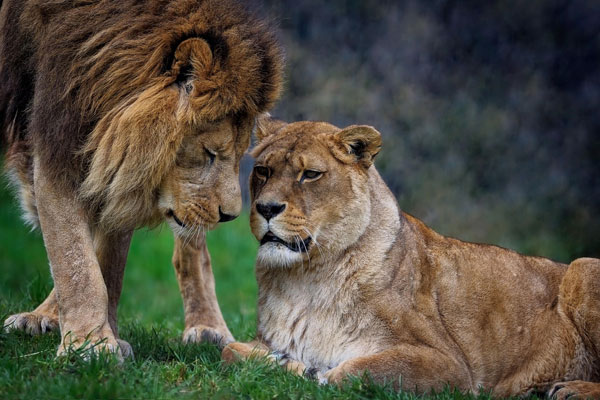Lion attack in Gujarat sparks fears amid India’s growing Asiatic lion population

[Lion, Lioness, Barbary lion image, Photo Credit to Pixabay]
In late August 2025, a five-year-old boy was fatally attacked by a lion in Gujarat’s Amreli district, underscoring the escalating human–lion conflict as India’s Asiatic lion population continues to expand beyond designated protected forests.
The child, identified as Pulsing Ajnera, had been playing with his brothers in a field near their home when a lion suddenly appeared and dragged him into the nearby forest.
Despite desperate attempts by family members and neighbors to repel the animal with stones and sticks, the boy could not be saved.
His body was later recovered by local authorities, who confirmed this was the seventh human fatality linked to lions in Gujarat within the past year.
Officials report that attacks on both humans and cattle have risen sharply, with cattle losses nearly doubling over the past five years.
Villagers across Amreli and Gir Somnath districts have voiced growing concerns, saying they now feel unsafe working in fields or tending livestock near forest edges.
Asiatic lions, slightly smaller than their African counterparts, are found only in Gujarat, where conservation efforts have been widely recognized as a global success story.
A long-standing hunting ban and decades of protection have allowed the population to rebound dramatically, increasing by more than 30% in the last five years to reach 891 individuals.
However, as numbers rise, lions are increasingly venturing into human-dominated landscapes.
Wildlife biologist Ravi Chellam explained that the success of lion conservation has created a new set of challenges.
“The minute a lion moves into villages, farmlands, or parking lots, the probability of attacks rises,” he said, warning that Gujarat’s exclusive reliance on a single habitat for lions leaves both people and wildlife at risk.
The question of relocating lions outside Gujarat has been debated for over a decade. In 2013, India’s Supreme Court ordered the transfer of some lions to Kuno Wildlife Sanctuary in Madhya Pradesh to reduce pressure on Gujarat and safeguard against disease outbreaks.
However, the plan has stalled. The introduction of cheetahs in Kuno, part of a separate reintroduction project launched in 2022, has further complicated prospects for moving lions there.
Meanwhile, Gujarat officials have proposed an alternative plan to relocate some lions within the state to Barda Wildlife Sanctuary.
Critics, however, contend that Barda is too small and too close to Gir National Park, raising fears that a single disease outbreak could still devastate the species.
Conservationists note that while the coexistence between lions and local communities has long been celebrated, bolstered by tourism revenue and cultural ties providing incentives for tolerance, that relationship is increasingly under strain.
Rising attacks on livestock, and now the death of a young child, have deepened frustrations within rural families.
Pulsing’s father, Heera Ajnera, who once believed lions and humans could peacefully coexist , has since relocated his family out of fear.
“We could not stay there anymore,” he said. “We left everything behind.”
The tragedy has reignited national debate over how India should balance conservation achievements with public safety.
Experts warn that without swift, coordinated action, future encounters between lions and villagers may become increasingly deadly.

- Sieun Park / Grade 12
- International School Manila

![THE HERALD STUDENT REPORTERS [US]](/assets/images/logo_student_us.png)
![THE HERALD STUDENT REPORTERS [Canada]](/assets/images/logo_student_ca.png)
